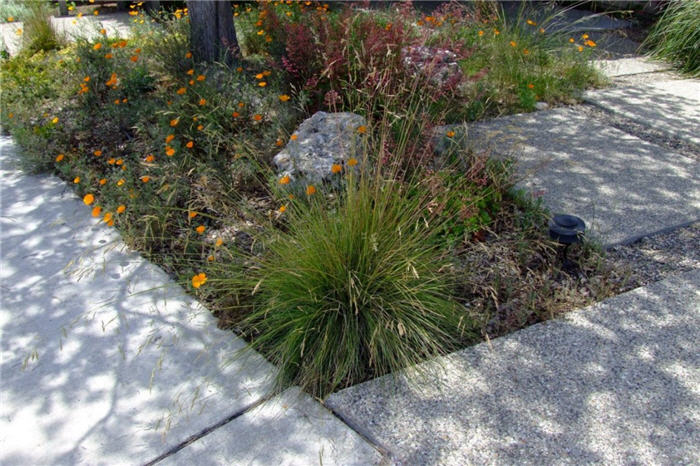| Botanical Name: Festuca muelleri | |
| Common Name: Mueller's Fescue |

-
Anatomy
-
Culture
-
Design
Plant Type
Ground cover, Grass
Height Range
Under 1', 1-3'
Flower Color
Green, White
Flower Season
Summer
Leaf Color
Green, Blue Green
Bark Color
n/a
Fruit Color
n/a
Fruit Season
n/a
Sun
Full, Half
Water
Medium
Growth Rate
Moderate
Soil Type
Sandy, Clay, Loam
Soil Condition
Average, Rich, Poor, Well-drained, Dry
Soil pH
Neutral, Basic
Adverse Factors
Invasive
Design Styles
English Cottage, Japanese, Meadow, Mediterranean, Ranch, Seascape, Spanish, Woodland
Accenting Features
Unusual Foliage
Seasonal Interest
Winter, Summer, Fall
Location Uses
Entry, Perennial Border, Shrub Border, Foundation, Parking Strip, Walkways, With Rocks
Special Uses
Erosion Control, Filler, Mass Planting, Lawn Alternative, Naturalizing, Small Spaces
Attracts Wildlife
Birds, Wildlife
Information by: Stephanie Duer
Photographer: GardenSoft
Photographer: GardenSoft
-
Description
-
Notes
This Central European native fescue has shiny, dark green foliage that is slightly bluish green. It is a cool season grass that grows up to 8 inches tall and equally wide. If massed together it can become a lawn alternative. It does reseed, so deadhead if you don't want it to spread, though it does not do so aggressively. Clump grows 6 to 12 inches, with seed plume standing up to 12 to 18 inches.
Grow in sun to part shade in well drained soil. Fescues resent wet soils so take care to not over-water; when planting, set the plant so the crown is slightly above soil grade to give it a good start (see Guides). Drought tolerant, though looks better when watered regularly (but not frequently). Because of its re-seeding ways, it is particularly well suited to parkstrips, meadow-like gardens, and alternative lawn areas. Zones 4 - 9.